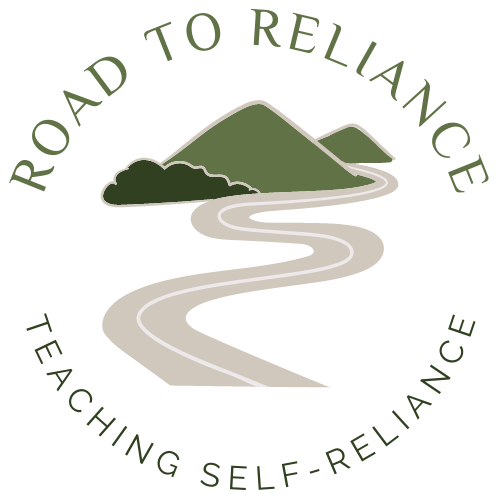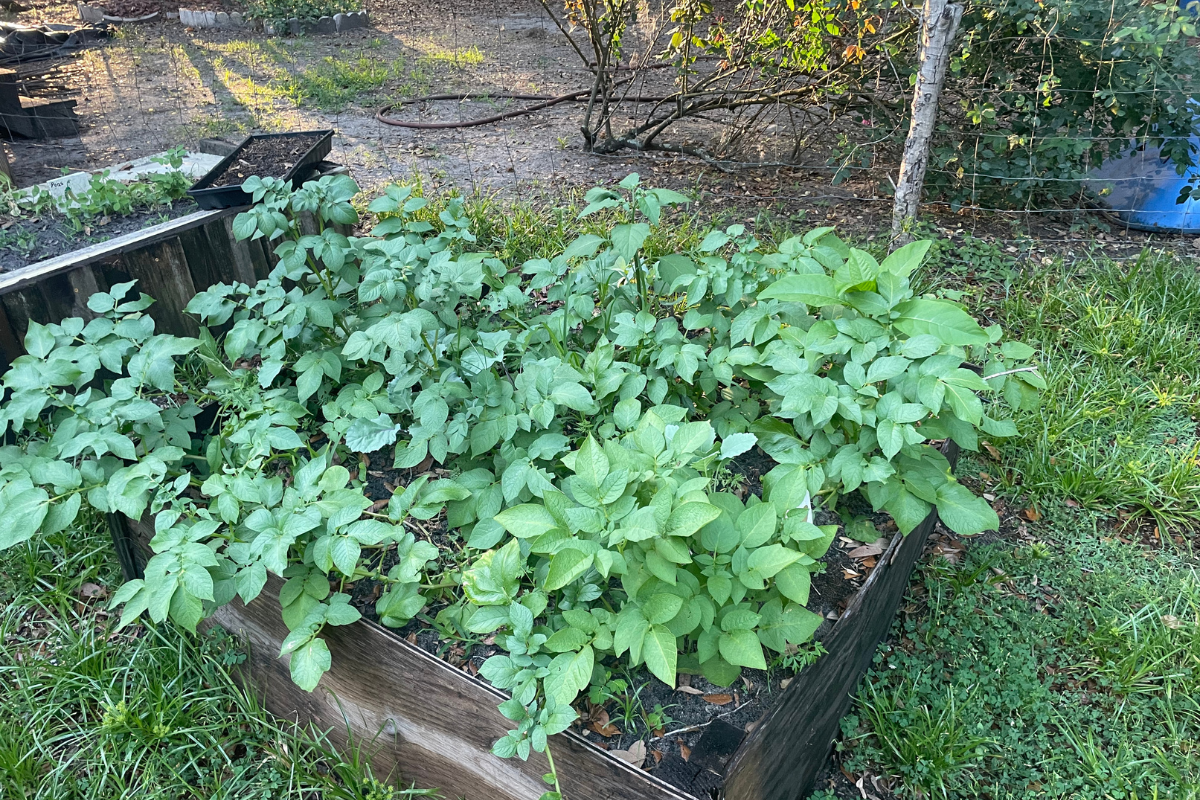Between food shortages, epidemics, and other situations that the world has experienced lately, more and more families are making the shift toward self-reliant gardening, or, as also called, self-sufficient gardening. They are leaning more towards homegrown food.
With the recent increase in the price of food, modern dependence on the local grocery store is lessening. People want to provide fresh and healthy food for their families and in an easy way.
Thus, people are starting to grow their own food even if just in a small garden. From simple vegetable gardens to completely sustainable agriculture, the terms organic farmer and organic gardening seem to be the new trend.
If you are looking to achieve a greater sense of self-reliant living, it’s a good idea to start with growing a self-reliant garden.
What is a Self-Reliant Garden
Basically in its simplest form, a self-reliant garden provides you with a good bit of the food you need to survive, grown in a chemical-free or organic way. It means providing the freshest produce, herbs, garden-fresh fruits, and berries for your family. It can include medicinal herbs and leafy greens as well as other types of crops, like grains.
A self-reliant garden makes use of small space like small garden beds with the square foot method. Other forms of gardening may include using raised beds or even containers.
It also includes larger plots of land where farmers practice truly sustainable agriculture and provide the community with wholesome organic produce.
Unlike commercial farming which uses harmful fertilizers and pesticides, self reliant gardening uses natural pest control and natural pollinators such as bees.
Animal manure and other types of organic material are incorporated into the soil. The organic matter is continuously being added from a compost bin or pile made up of kitchen scraps, grasses, and other natural ingredients. The soil therefore, receives the essential nutrients it needs naturally.
What Are the Benefits Of Self-Reliant Gardening?
The benefits of this type of gardening include:
- Leaving a smaller carbon footprint on the Earth
- No uses of chemical fertilizers
- Provides a great way to feed your family foods high in nutritional value
- Provides you with better food security
- Can be grown even if there is not much space available
How To Start Your Garden
There are four things to consider and plan before you jump into self-reliant gardening. Getting these four things right from the beginning can mean the difference between a successful garden and one that fails.
The four steps include:
- Considering your climate and soil
- Learning to amend the soil and control moisture
- Considering different gardening methods
- Selecting heirloom seeds
Considering Your Climate and Soil
Your climate and your soil are the most important factors to consider before starting your garden. If you do not understand your climate, you cannot predict planting dates or when to protect your plants.
Be sure you are aware of the first and last frost dates for where you live. These dates will help determine when and what you can plant and harvest. You should know whether early spring or early summer is better for example.
Make sure you are aware of your plant zone too as well as whether you have a short growing season or a longer one. Most vegetables need at least six hours of sun, so pick an appropriate place to plant.
Once a plot is chosen you must then learn what type of soil you have. This is so important, because having the right soil will allow for abundant crops and help keep diseases at a minimum.
A simple soil test will quickly tell you everything you need to know about your soil. Samples of soil can be taken to your local agricultural center to be tested or you can purchase a kit locally.
Amending the Soil And Controlling Moisture
The ideal pH of gardening soil is 6.5. You should learn how to lower and raise the pH of your soil if needed and when to do so.
Other areas of learning may include using cover crops, making compost, using animal manures, and incorporating organic matter.
You should also know how to regulate your watering and watering methods as well as how to use mulch, the different kinds of mulch, and which mulch is best for the plants they are surrounding.
You can find more information about all of these things in my Self-Reliant Gardening E-book.
Consider Which Gardening Methods Are Best For You
If you are going to grow your own food by practicing self-reliant gardening, you should learn common practices. These include crop rotation, cover crops, pest control methods, and how to prevent pathogens and of course self-sustaining gardening.
Be sure to learn some different methods such as no-till gardening raised beds, and vertical gardening. Research some of the innovative techniques that are being introduced to new gardeners.
Selecting Quality Heirloom Seeds
Before starting any self-reliant garden project make sure you are using quality, heirloom seeds. Heirloom varieties allow the seeds you collect this year to produce plants next year that have similar characteristics as the original plant.
The best part about these types of seeds is that they are open-pollinated and contain no GMOs. (If you don't already know about the effects of gmos do some research.)
Heirloom varieties usually have a history behind them. Bakers Creek Seed Company provides a plethora of heirloom seeds to get you started. You can also check out Mary’s Heirloom Seeds as well. There are tons of seed catalogs available. Just do an online search.
The Use Of Staple Crops
A typical self-reliant garden typically starts with the planting of staple crops first. Staple crops are the foods that are the basis of a human diet.
The staple foods you choose for your self-reliant garden should be easy to harvest and store. They should return a good yield, and be considered high-calorie crops to provide the energy from carbohydrates that you need daily.
The three most common of these crops are; potatoes and sweet potatoes, grain corn, and home-grown wheat. Growing wheat in the home garden may not be possible as it requires a bit of space.
Choosing Your Crops
The food you will choose to grow will be decided based on your needs and available space. Below is a list of the common plants to consider when you start a self-reliant garden on your own property.
Pick the ones that are appropriate for your family. Growing these crops can help save on the food bill.
Pick the ones that are appropriate for your family.
- Dry Beans: average yield of 3 to 5 pounds per 100 square feet. High in calories. Can be stored, when dry in jars for a long time
- Potatoes: Calorie-rich and nutrient-dense. Harvest is ready in 2-3 months. Can be stored for up to 6 months.
- Grain Corn: Very nutrient-dense. Easily grown for cornmeal.
- Winter squash: yield between 50 and 90 pounds per 100 sq. ft. Can be stored all winter in a root cellar.
- Cabbage: Very nutrient-dense, cold hardy. Can be used for fermenting and freezes well.
- Onions: Seeds or sets work well. Store well. Can make onion powder.
- Garlic: Can be stored for several months. Can be made into garlic powder. Not nutrient-dense but great medically at home.
- Carrots: Can be grown year-round in many places. Nutrient-rich, easy to grow, and take up little space.
- Beets: Easy to grow. Stores really well. Nutrient-dense. Multiple harvests. A great addition to livestock feed.
- Greens: Nutrient-dense. Great for smoothies and salads.
Other Crops to Consider for Self-Reliant Gardening
The above staple crops are a great start to your self-sufficient garden. However, there is a wide diversity of crops you can consider also.
Tomatoes, peppers of all sorts, radishes, swiss chard, and pumpkins are also common plants for your garden. Add new plants and try new things each year. Consider starting an herb garden as well.
Be sure to grow only what you and your family will consume. No sense in planting cabbage if no one will eat it.
Start small with only a few vegetable plants in the first year of gardening. Then increase each season to add more variety to your garden.
What’s Next in your Self-Reliant Gardening Journey?
Once you get the hang of basic gardening you may want to consider expanding your gardening skills. You can add perennial grasses, grains, and other perennial plants that you can extract and make oils from.
These include sunflowers, peanuts, sesame seeds, rapeseed (for canola oil), and flaxseed. These help to turn your self-reliant garden into a self-sustaining garden.
You may also want to consider making your own sweeteners by growing Sugar Maple trees, raising bees for honey, or growing sorghum, cane sugar, and stevia. Consider fruit trees also.
Other considerations may include learning to collect rainwater in rain barrels for better watering in dry spells, or including a pollinator garden to bring in beneficial insects to your garden.
Final Thoughts on Self-Reliant Gardening
Self-reliant gardening is all about growing the best food possible for your family in whatever space you have available. With minimal effort, and perhaps a little help, you can produce a lot of food that you may not have thought you could grow before
.
What better way to stop depending on the grocery store to feed your family and have freedom of choice when it comes to what you feed your family?
Don't forget to get your FREE Gardening Resources Workbook!


